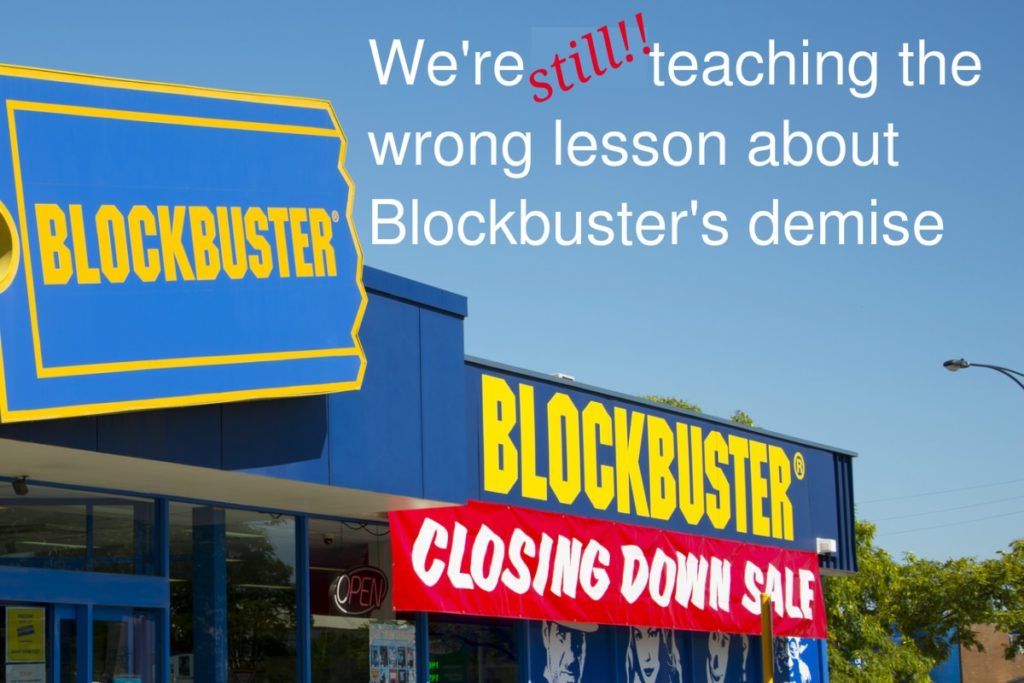Nearly a decade after the demise of Blockbuster, we still hear it often cited as an example of the failure to see or act on innovation. It’s still bandied about as a lesson in how a dominant player can be disrupted out of existence.
But that’s not the real lesson.
When Blockbuster saw the Netflix threat, they responded with a hybrid online / offline model they called “Total Access”. Then CEO, John Antioco, by his own admission didn’t “get” technology. But he did get the threat. The model his team created started to outpace Netflix in customer acquisition.
Like many blitzscaling models, this was costly. The ambition was to rapidly acquire customers, then build profitability on top of a critical mass.
But Blockbuster had a large investor who wasn’t prepared to take the short term hit. They forced the leadership to stop the innovation and double down on its store strategy.
The rest is the history that is often told.
Short termisim from shareholders is what killed Blockbuster. It was their inability to see or stomach building a long term vision that did them in.
The bigger Blockbuster lesson isn’t how an upstart can disrupt a myopic company. It’s how short termism can kill off long term viability. That’s the lesson that should be talked about.

